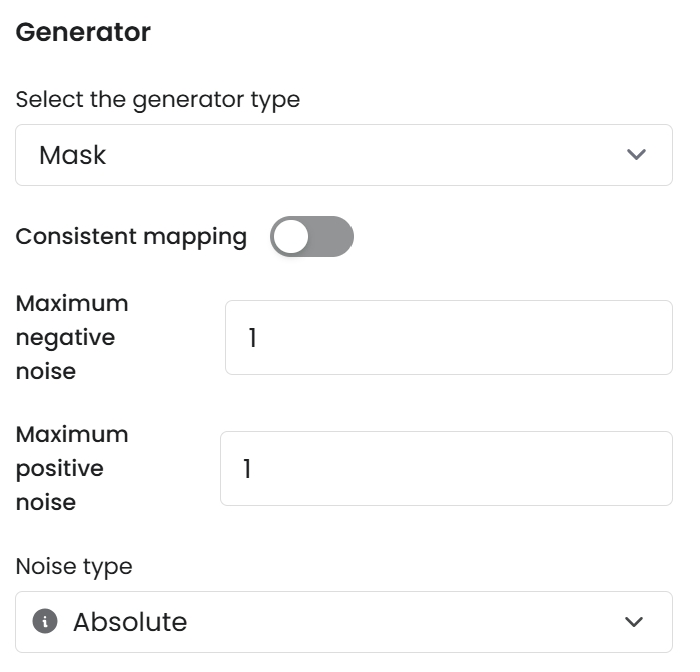Numeric (decimal)
Below is a list of available numeric (decimal) mask functions.
Numeric Noise
Adds noise to numeric data based on a uniform distribution, ensuring that the values are randomized while preserving the overall structure of the dataset. This is useful for anonymizing numerical fields where consistency and distribution must be maintained.
Parameters
Maximum negative noise: The smallest amount the date can be adjusted, relative to the original date.Use negative numbers to shift the date into the past.
Example: If the date part is set to "Day" and the minimum shift is set to
-5, this ensures the date will not be shifted earlier than 5 days prior to the original date.A positive number shifts the date forward.
Example: If the minimum shift is
5, the date will not shift earlier than 5 days after the original date.
Maximum positive noise: The largest amount by which the date can be adjusted from the original value.Use positive numbers to shift the date into the future.
Example: If the date part is set to "Day" and the maximum shift is set to
5, the date will not be shifted later than 5 days after the original date.
Noise type: The unit of time (Additive, Multiplicative, Absolute) that will define the granularity of the shift.Additive: If the data has a value of x, we will add random noise within the range -10% to +10% of x's absolute value.
Multiplicative: Multiply the value by a random factor within the range -5 to 5.
Absolute: Add direct random noise to the value within the range from -5 to 5.
The selected unit will be applied to both the minimum and maximum shift fields
Consistent mapping: Numeric Noise supports consistent mapping.
Example
If you configure:
The results will be:

Was this helpful?

